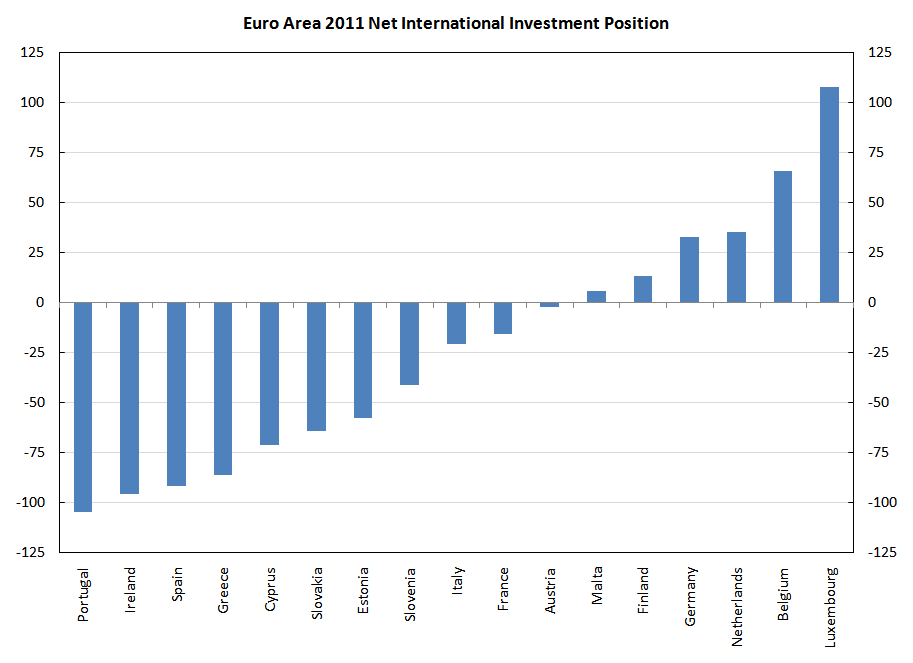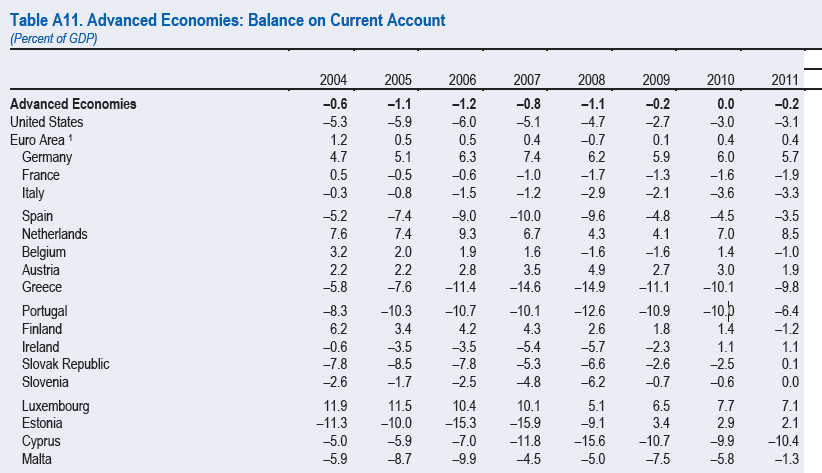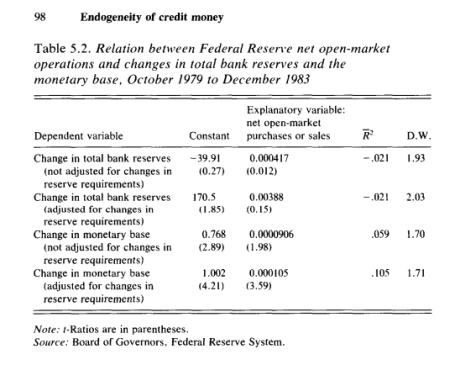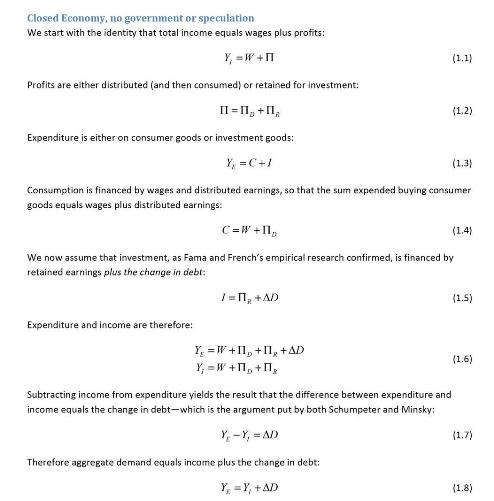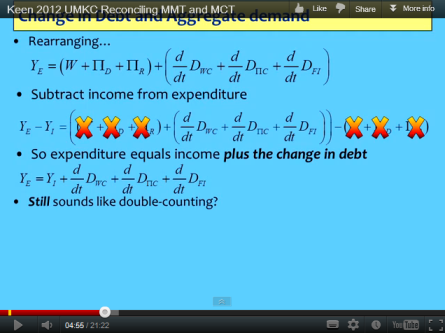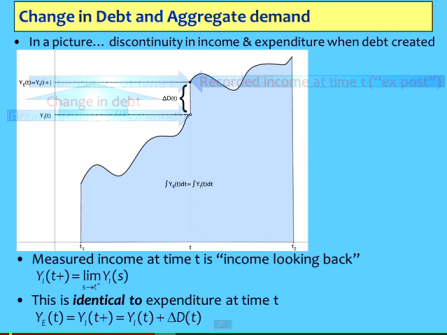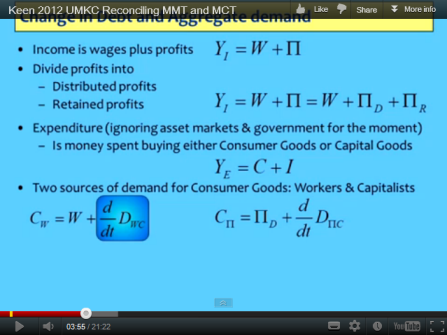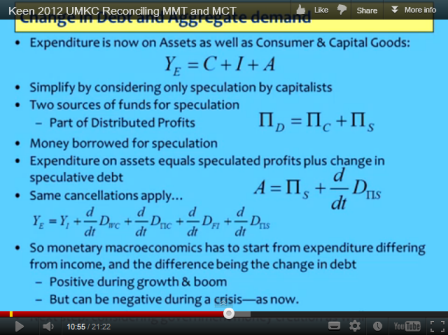It is sometimes said that a fiscal union would be the best solution to the Euro Area crisis – perhaps it is the only solution. Indeed while the German leaders Angela Merkel and Wolfgang Schäuble have been trying to promote “more Europe” to achieve this objective, their plan is still defective since it is likely to be based on old plans of a political union.
The idea that the Euro Area needs a political union was known from before – as mentioned by the Werner Report from 1971. Nicholas Kaldor wrote an article in the same year (In The Dynamic Effects Of The Common Market first published in the New Statesman, 12 March 1971 and also reprinted (as Chapter 12, pp 187-220) in Further Essays On Applied Economics – volume 6 of the Collected Economic Essays series of Nicholas Kaldor) highlighting the serious defects in the plan.
See my post Nicholas Kaldor On The Common Market. In the post I missed out Kaldor’s important points about the plan for the fiscal union itself.
If the leaders of Europe are proposing to have a plan such as in the Werner report, then Europe is in more trouble. “What is not envisaged is that the main responsibility for public expenditure and taxation should be transferred from the national Governments to the Community.” According to Kaldor, this is bound to fail for reasons mentioned below.
This fault was also noted by Philip Arestis and Malcolm Sawyer recently in their article The Dangers Of Pseudo Fiscal Union In The EMU.
I am reproducing here the relevant section of Kaldor’s essay (pp. 202-207) for the sake of completeness:
THE CONSEQUENCES OF A FULL ECONOMIC
AND MONETARY UNIONThe events of the last few years – necessitating a revaluation of the German mark and a devaluation of the French franc – have demonstrated that the Community is not viable with its present degree of economic integration. The system presupposes full currency convertibility and fixed exchange rates among the members, whilst leaving monetary and fiscal policy to the discretion of the individual member countries. Under this system, as events have shown, some countries will tend to acquire increasing (and unwanted surpluses) in their trade with other members, whist others face increasing deficits. This has two unwelcome effects. It transmits inflationary pressures emanating from some members to other members; and it causes the surplus countries to provide automatic finance on an increasing scale to the deficit countries.
Since exchange-rate adjustments or “floating rates” between members are held to be incompatible with the basic aim of economic integration (and are incompatible also with the present system of common agricultural prices fixed in international units) the governments of the Six, at their Summit meeting in The Hague in December 1969, agreed in principle to the creation of a full economic and monetary union, and appointed a high-level committee (the so-called “Werner Committee”) to work out a concrete programme of action.
The Werner Committee’s recommendations have not yet been adopted in detail, though its principal objectives have been confirmed by the Community’s Council of Ministers.
The realisation of economic and monetary union, as recommended in the Werner Report, involves three kinds of measures, each introduced in stages: monetary union, tax harmonisation, and central community control over national budgets. It envisages a three-stage programme, with each stage lasting about three years, so that the whole plan is designed to be brought into operation by 1978-80.
In the monetary field in the first stage the interest and credit policy of each central bank is increasingly brought under common Community surveillance and permitted margins of variations between exchange rates are reduced or eliminated. In the second stage exchange rates are made immutable and “autonomous parity adjustments” are totally excluded. In the third stage the individual central banks are abolished altogether, or reduced to the status of the old colonial “Currency Boards” without any credit creating power. [footnote: Different currencies (marks, francs, etc.) might be nominally retained so long as each currency has always a 100 per cent. backing in terms of the Community’s reserve currency.]
In the field of tax harmonisation it is envisaged that each country’s system should be increasingly aligned to that of other countries, and that there should be “fiscal standardisation” to permit the complete abolition of fiscal frontiers, which means not only identical forms but also identical rates of taxation, particularly in regard to the value added tax and excise duties.
In the field of budgetary control the Werner Report says “the essential elements of the whole of the public budgets, and in particular variations in their volume, the size of balances and the methods of financing or utilizing them, will be decided at the Community level”.
What is not envisaged is that the main responsibility for public expenditure and taxation should be transferred from the national Governments to the Community. Each member will continue to be responsible for raising the revenue for its own expenditure (apart from the special taxes which are paid to finance the Community’s own budget but which will remain a relatively small proportion of total public expenditure and mainly serve the purposes of the Agriculture Fund and other development aid).
And herein lies the basic contradiction of the whole plan. For the Community also envisages that the scale of provision of public services (such as the social services) should be “harmonised” – i.e., that each country should provide such benefits on the same scale as the others and be responsible for financing them by taxation raised from its own citizens. This clearly cannot be done with equal rates of taxation unless all Community members are equally prosperous and increase their prosperity at the same rate as the other members. Otherwise the taxation of the less prosperous and/or the slower-growing countries is bound to be higher (or rise faster) than that of the more prosperous (or faster-growing) areas. [footnote: A further reason for differences in the burden of taxation necessary to provide a given level of service lies in differences in demographic structure – e.g., some countries have a larger proportion of pensioners or schoolchildren than others.]
The Community will control each member country’s fiscal balance – i.e., it will ensure that each country will raise enough in taxation to prevent it from getting into imbalance with other members on account of its fiscal deficit. To ensure this the taxes in the slow growing areas are bound to be increased faster; this in itself will generate a vicious circle, since with rising taxation they become less competitive and fall behind even more, thereby necessitating higher social expenditures (on unemployment benefits, etc.) and more restrictive fiscal policies. [footnote: It is for this reason that in most countries it has been found necessary to transfer a rising population of social expenditure (on poor relief, education, roads etc.) from local authorities to the Central Government, and to supplement an increasing proportion of local tax revenues by grants from the Centre (such as the rate-equalisation grants in the U.K.).] A system on these lines would create rapidly growing inequalities between the different countries, and is bound to break down in a relatively short time. [footnote: To imagine the consequences one should ask what would happen if the inhabitants of each county in the U.K. were required to finance all their social expenditure by local taxes. Living in Cumerland would be enormously penalised; living in Surrey would be a tax haven.]
This is only another way of saying that the objective of a full monetary and economic union is unattainable without a political union; and the latter pre-supposes fiscal integration, and not just fiscal harmonisation. It requires the creation of a Community Government and Parliament which takes over the responsibility for at least the major part of the expenditure now provided by national governments and finances it by taxes raised at uniform rates throughout the Community. With an integrated system of this kind, the prosperous areas automatically subside the poorer areas; and the areas whose exports are declining obtain automatic relief by paying in less, and receiving more, from the central Exchequer. The cumulative tendencies to progress and decline are thus held in check by a “built-in” fiscal stabiliser which makes the “surplus” areas provide automatic fiscal aid to the “deficit” areas.
Even so, there is need for special regional policies – such as the U.K. differential grants and subsidies to the development areas – to alleviate the problems of growing regional inequalities. The need for the latter is recognised (in a vague way) in the Werner Report, which mentioned “community measures which should primarily concern regional policy and employment policy” and whose “realization would be facilitated by an increase in financial intervention at the Community level”. What the Report fails to recognise is that the very existence of a central system of taxation and expenditure is a far more powerful instrument for dispensing “regional aid” than anything that special “financial intervention” to development areas is capable of providing.
The Community’s present plan on the other hand is like the house which “divided against itself cannot stand”. Monetary union and Community control over budgets will prevent a member country from pursuing full employment policies on its own – from taking steps to offset any sharp decline in the level of its production and employment, but without the benefit of a strong Community government which would shield its inhabitants from its worst consequences.
Some day the nations of Europe may be ready to merge their national identities and create a new European Union – the United States of Europe. If and when they do, a European Government will take over all the functions which the Federal government now provides in the U.S., or in Canada or Australia. This will involve the creation of a “full economic and monetary union”. But it is a dangerous error to believe that monetary and economic union can precede a political union or that it will act (in the words of the Werner report) “as a leaven for the evolvement of a political union which in the long run it will in any case be unable to do without”. For if the creation of a monetary union and Community control over national budgets generates pressures which lead to a breakdown of the whole system it will prevent the development of a political union, not promote it.
But it would be also dangerous to dismiss the Werner Report on the ground that it is not likely to be implemented, particularly if Britain is inside the Community and will have a voice in deciding what happens. For the problems that led to The Hague decisions and to the Werner Report are genuine enough: the framework of institutions and arrangements which make up the present European Community do not constitute a viable system. The Community must either go forward towards full integration (via a political union) or else relax the rigidity of its present arrangements, particularly in regard to agriculture and exchange rates. And it would be hopeless for Britain to join the Community not knowing whether it wishes to move in one direction or the other.
[italics in original, boldening mine]
